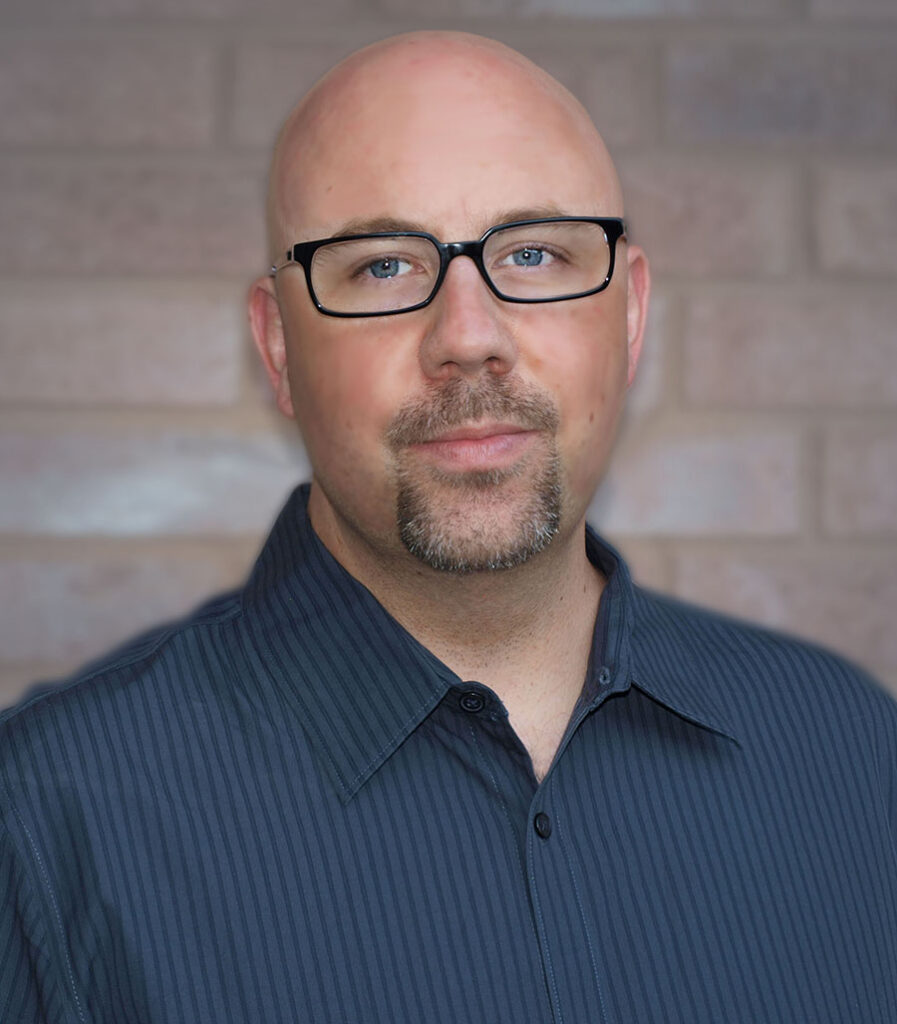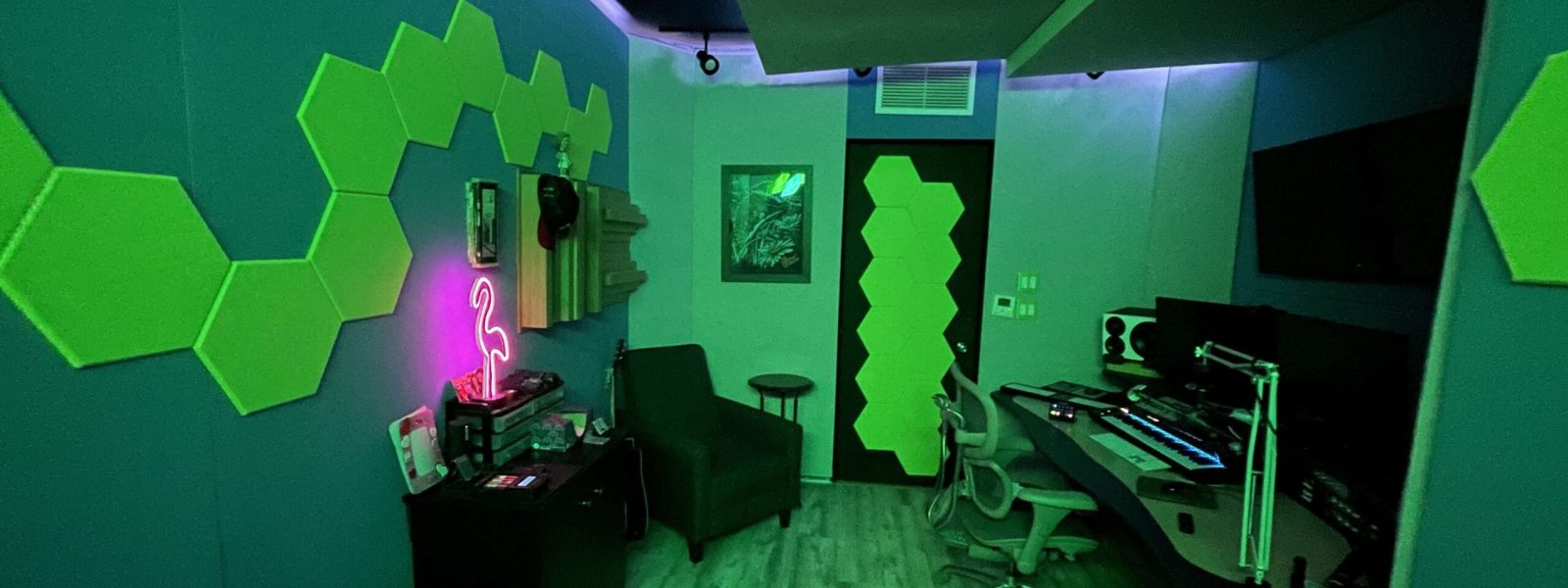ABOUT
Audio has been the focus of my entire adult life
20-years and counting...
Has it really been 20 tears?! It has. But I’m not old! I’m experienced. It started in college at Colorado Sate’s student station, 90.5 KCSU. I didn’t know it at the time but this was all the “college” I really needed. I started in state-of-the-art facilities after a great flood (and an amazing insurance policy) wiped out the existing student station. I was handed a brand new copy of this new software called “Cool Edit Pro 2.0” and told to learn it and start doing production if I wanted. I was hooked. I never had to pick up a razor blade and cut a single piece of tape.
I got my first paid gig as a board-op for the Avs and Nugs in Denver. I’ve long said this is a job everyone who wants to be live on the radio should do at some point. Nothing teaches you flow, timing, and control like this. After about 3-months it was onto Boulder for my first full-time job as a morning producer and commercial production and imaging director. I didn’t know how good I had it at the time but I learned so many aspects of high-level, live broadcasting. And then after about 18 months I was laid-off.

When the station closed in Boulder I had what I was told was the right of passage in radio…getting fired. If you work in radio, you’re probably going to get laid-off or fired at least once. Now it was time to do another thing most people in radio have to do: leave my comfort zone and the place I had lived for so many years.
Off to South Dakota to chase a small dream of being a professional sports play-by-play announcer. I liked the gig but the place wasn’t for me and I quickly realized sports is an ultra competitive, up-hill climb that I didn’t have the requisite drive for. I have too much respect for the great ones and had enough self-actualization to know I wasn’t going to put in the work I needed to to be comfortable and successful. But my love of live radio and production got stronger.
I got hired by Clear Channel to be a bunch of things for their Sussex, NJ cluster. On air jock on one station, eventually four, plus Imaging Director for about 8 stations in two clusters. Again, they let me do absolutely everything I wanted and I never said no (or tried not to). After about 6 years I ran into a guy at a live remote who said he, “worked in radio too, want to chat about imaging sometime?” That was Dan Kelly the Creative Dir. at WPLJ New York. He got my name in front the Disney programmers…long story short I was hired at one the most legendary stations in America. 96-3 KSCS.
You’ve heard of imposter syndrome? I had it bad. It took me at least 1 year before I felt like I belonged there. On top of that, the guy who actually hired me was let go after about 3 or 4 weeks and right after KSCS had hit its best #s in about 15 years. We kept rolling though a pretty competitive battle with (also legendary) 99.5 The Wolf in town which lasted my whole time there. Both stations changed branding, slogans, voices, on-air talent and certainly PD’s many times. I avoided about 3 major RIF’s and a few other smaller staff reductions plus I think I had more than 6 PD’s over 6 years. Finally, I was part of the big move from our spacious, lavish, long-used, wonderful facilities in Arlington, TX to the….(don’t say anything if you can’t say anything nice) “studios” in Dallas. Those quote marks are doing a lot of heavy lifting there.
To say my time at KSCS was chaotic, exhilarating, frightening, thrilling, competitive, fulfilling and awesome wouldn’t be enough. I worked with legends and have kept a lot of those people as friends to this day.
BUT…I felt like the writing was being printed on the wall in HUGE permanent ink letters that things were changing in the staffing necessities of local radio, even in the 5th largest market in the states. After an ownership change ~2011 I was open to a new challenge and it dropped in my lap.
In 2012, the fine folks at the legendary jingle company, TM Studios in Dallas, asked me to come aboard and expand their offerings in the radio imaging space. I did that and really started focusing on all form os of audio production. I tried (and still try) to absorb every piece of tracking, mixing, mastering knowledge and techniques I could get into my brain. I continue to work for “TM” and have also been fortunate to continue a successful voiceover career.
Speaking of that (voiceover)…oh look, a pun. I really started focusing on Voiceover in 2009. Of course most radio folks have to “voice” lots of commercials for their local stations but you learn pretty quick everything you know about voiceover from radio is just plain wrong. I had a lot of terrible habits to shed. I started with multiple coaches and paying closer attention to what I was hearing on TV, corporate, industrial narrations, eLearning, etc.
My first “big gig” was with American Airlines and damn…that was kind of eye-opening. I had at least 8 different people there to listen, direct, critique etc and I didnt know who any of them were. But from there I kept working, following advice from talented friends and coaches, seeking out representaion and just following the best advice I ever got: to be the best Ryan I could be in my performances. If it’s not clear what I mean, it’s rarely good practice to emulate other successful Voice Actors and give your best version of THEM. Not everyone has to be told this but I did and I’ve never let that leave my mind when performing.
Another thing I did which was immeasurable to my career and network was start a podcast about Radio Imaging and Voiceover. I won’t go on about it here as I had to put it to bed in late 2019 but it was a great resource for me and I’m told a great resource for talents all around the globe.

my new studio
I’m actually not the most technically savvy individual in the audio world but I can hold my own. However, I have a LOT of great friends and colleagues who know a ridiculous amount of info about creating a great studio space. I asked a lot of them for help.
I really only had a few goals: Create one room to record Voiceovers, Mix/Master Music and produce all forms of audio creative. I also wanted to create an area where I could track vocalists and solo musicians and what eventually became a nice podcasting space.
I used contractors to do framing (room in a room), sheet rock, electrical and some insulation. I did most of the interior work myself (pretty much everything you can actually see and touch). To be totally honest I ran out of time for a full finish so there are some details I didn’t address yet. But some people love seeing any studio in any state. So here is mine.

